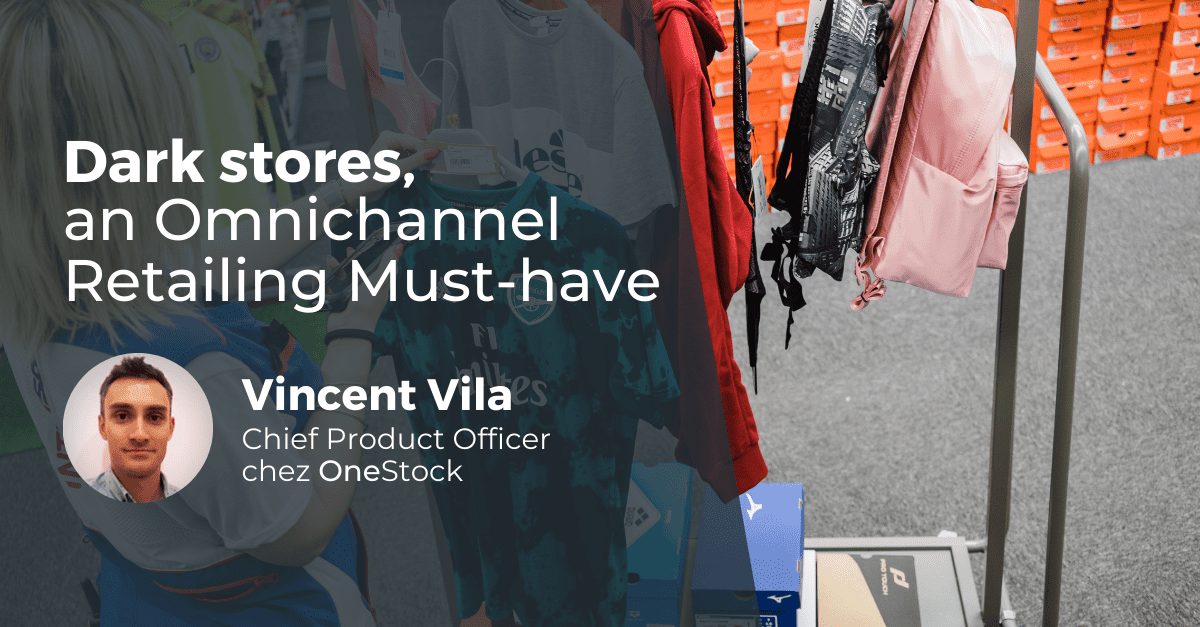
Dark stores: a must-have in omnichannel retail
For almost a year now, the retail sector has been under considerable strain. Brands and their shops have had to adapt to all situations such as total closure, authorised Click and Collect, curfews, in-store visitor gauges…
Meanwhile, the e-commerce boom continues with global growth of 27.6% in 2020, for a total of 4,280 billion dollars. Customers are developing new habits, including online ordering and home delivery.
The switch from Brick & Mortar retail to online shopping was already underway and is now accelerating rapidly. So what are the new challenges facing stores?
Dark Stores, adapting in-store activity to survive the crisis
Sudden and repeated changes in regulations are weakening the strategies laid down by retailers. The stock on offer and the distribution of stock within the network have been disrupted and need to be urgently reviewed. Indeed, the successive closures cause stock problems: inventory is constantly piling up in stores as there is no longer the possibility of selling it directly to customers.
Meanwhile, online sales channels are doing very well. Some brands, such as PicWicToys, are performing remarkably. By implementing Ship from Store and transforming its stores into Dark Stores, PicWicToys has achieved the same sales performance as when the stores were open.
Although this example does not apply to all retailers, online sales channels can still significantly offset part of the retail losses linked to store closures. Transforming them into Dark Stores, i.e. order preparation centres, has become essential to maintaining an adequate level of activity.
Regular stores that have turned into Dark Stores during lockdown can continue to clear their inventory and surplus stock by preparing and dispatching web orders. Where permitted, they also prepare and make available Click & Collect and Reserve & Collect orders. This relieves the pressure on the warehouse, especially during peak periods. This also means that when the shops reopen to the public, they can resume their main activity with new stock.
Dark Stores, a new organisation for the retail sector
The Dark Stores method consists of optimising in-store operations for optimal efficiency. This model transforms shops into advanced logistics centres, or mini-warehouses. In this sense, the processes must be inspired by those of a warehouse, while remaining consistent with the reality of a store.
The multiple lockdowns in the UK have been an innovation accelerator and a full-scale test for many shops. Supplies were reallocated within the shop to allow the salespersons/preparation staff to easily find the items. The sales area was transformed into a picking area, the checkouts into a packing area and the dock into a shipping area. Everything was optimised to maximise the number of orders prepared with a minimum number of employees, in compliance with health regulations.
Dark Stores, a concept from across the Atlantic?
Many American shopping centres were deserted even before the Covid-19 crisis. There were several reasons for this: too many shopping malls, customers looking for other ways to consume, the rapid growth of online shopping, etc. Amazon quickly capitalised on this decline by developing its own business model and transforming deserted malls into Dark Stores.
Proximity is important, even for pure players who need to ensure fast delivery and lower transport costs, especially in the US where long distances can quickly drive up shipping costs. The shopping centres are ideally located because they are both close to potential customers and close to major roads. Their decline is driving rents down and could make them particularly interesting as advanced logistics centres.
As another example, Walmart, a company specialising in mass distribution, has also seen a decline in the number of visitors to its shops and has announced the transformation of several dozen of its supermarkets into mini-warehouses. Once again, physical points of sale remain a real asset for all retailers, even those in decline!
Dark Stores, what models to consider?
- Drive-thru & curbside pickup
In the last few years, Drive-Thrus have been booming in the UK, especially in the food industry. There are several reasons for this, notably legal reasons, but customers are particularly enthusiastic about this type of consuming.
Curbside pickup have successfully adapted this model to a city environment. Every square metre is optimised, the layout and animation of the store are limited to the reception area and this saves customers a lot of time. They can quickly collect orders that have already been processed and paid for. According to Nielsen and Kantar, 29% of new customers who have used the walk-thrus during lockdown think that they will continue beyond the lockdown. This is a trend that should not be overlooked!
- One-hour Delivery
Dark Stores allow retailers to offer very quick deliveries, in as little as 30 minutes in some cases. Location is key, as this mini logistics centre must be close to the customers to provide them with fast service.
The product range must also be well-chosen to store the best sellers that customers in a hurry will order.
Finally, the boom in fast deliveries, democratised by the catering sector, makes it easier to set up the service and creates a high level of expectation among consumers.
- Mixed models
While converting a store into a Dark Store is the only option in the event of a compulsory closure, it is a more difficult bet under normal circumstances. For stores that are running out of steam, one solution may be to reduce the sales area to create a mini-warehouse in the stock room. This area then becomes a Dark Store, allowing Drive-Thru or Click & Collect orders to be prepared as well as One -hour or standard deliveries.
The sales area is then reduced but remains open and allows the same assortment to be offered to the customer, in the form of a showroom. The customer can test the articles, try them on, make their choice and order them in-store. They will then be able to retrieve the items and pay for those they wish to keep.


